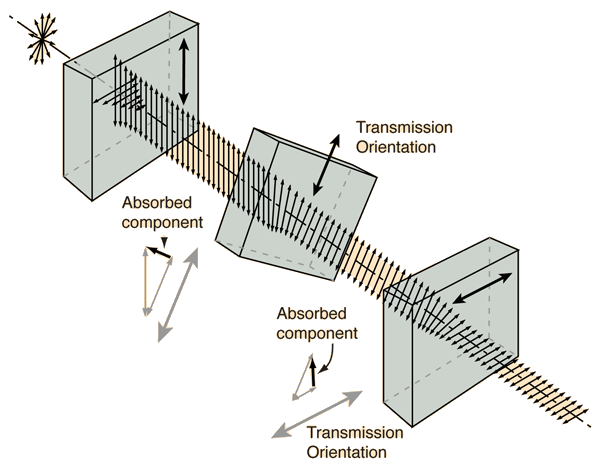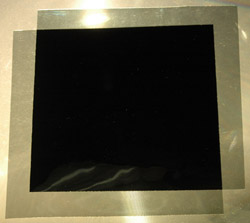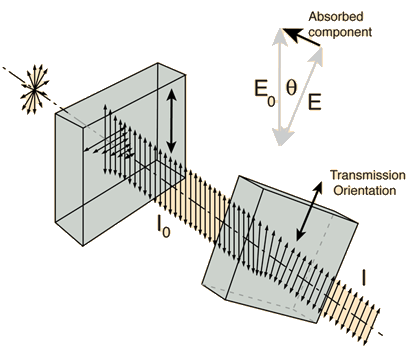Crossed Polarizers
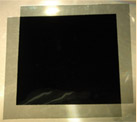 | An ideal polarizer produces linearly polarized light from unpolarized light. Two ideal polarizers would eliminate all light if their transmission directions are placed at right angles. The two sheets of polaroid at left are crossed and placed on an overhead projector. Polaroid is not an ideal polarizer, so some light is transmitted even when the sheets are crossed. |
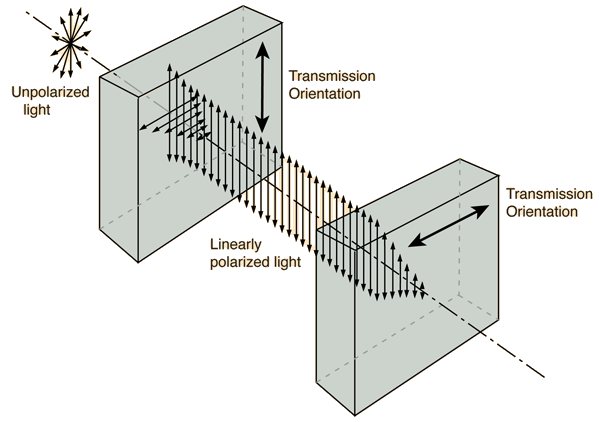
Polaroid materials accomplish polarization by dichroism. At angles other than 90°, the transmitted intensity is given approximately by the Law of Malus.
| What happens if you put a third polarizer at 45° between them? |
Polarization concepts
| HyperPhysics***** Light and Vision | R Nave |
